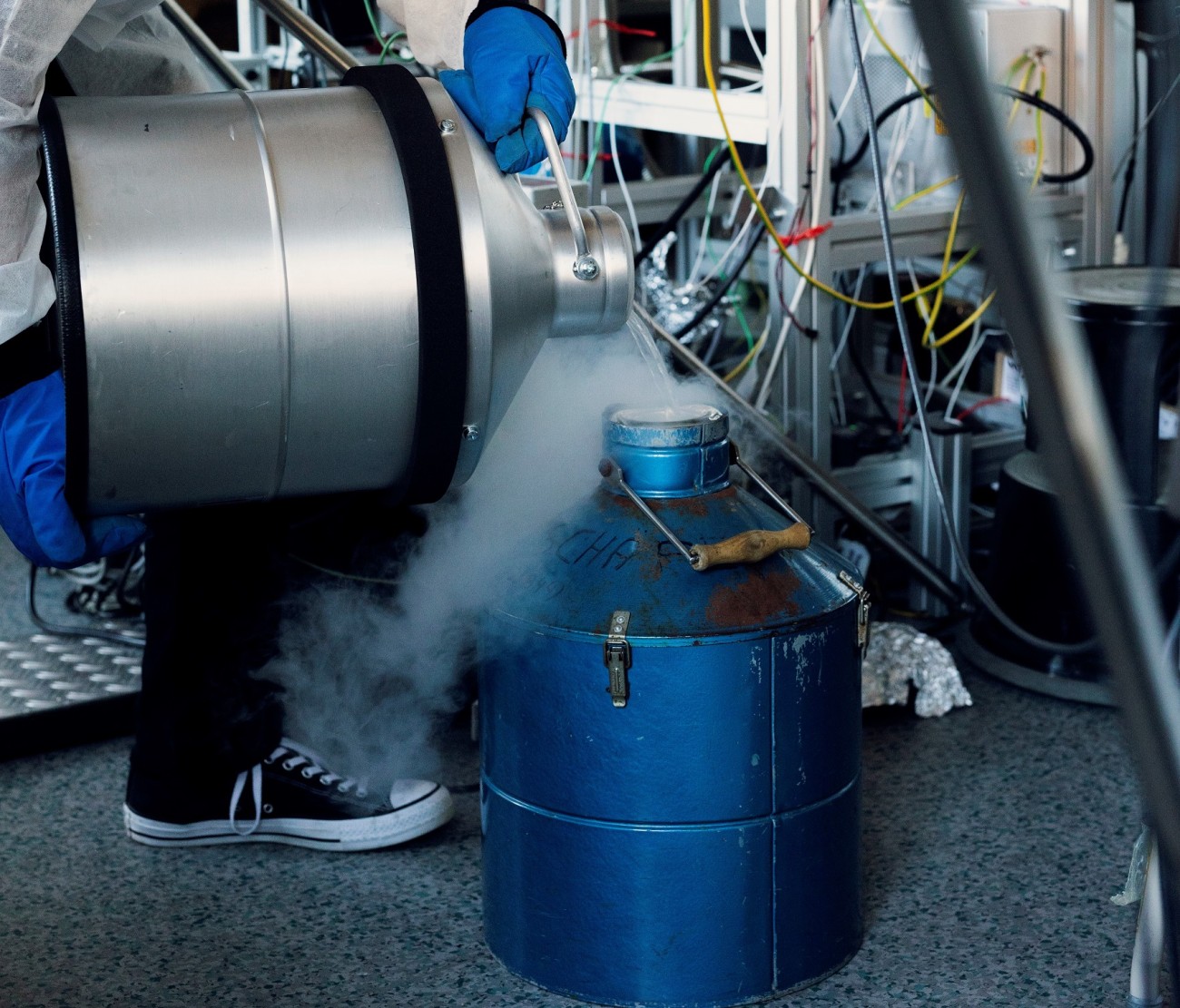On the one hand this is due to the complexity of transferring elementary charges from the electrode to solvated molecules and ions and the fact, that the involved process steps are not yet resolved. On the other hand, elementary charge transfer processes at the electrode/electrolyte interface accessible on a scientific scale only to a limited degree, because the crucial experimental and theoretical methods could not be applied to liquid systems so far. This effects in particular surface science based on photoelectron spectroscopy (PES) and simulations using density functional theory (DFT). Furthermore, the dynamics of mobile electrolyte species could not be sufficiently determined.
Semiconductor/Electrolyte Interfaces
In the framework of the BMBF funding initiative “Innovative Elektrochemie mit neuen Materialien” the JointLab Fundamentals of Electrochemical Interfaces is employing experimental (TU Darmstadt, FHI Berlin and HZB Berlin) and theoretical (Uni Ulm and CEC Mühlheim) fundamental research on electrode/electrolyte phase boundaries, which are relevant for intermediate storage of renewable energies as chemical fuels. The sub-project JointLab GEP-HE the Surface Science devision of TU Darmstadt is focused on semiconductor/electrolyte interfaces.
The Interfaces between semiconductors and liquid electrolytes can be investigated by means of photoelectron spectroscopy in different types of experiments. As experimental facilities the DAISY-Fun and the SoLIAS at BESSY II are accessible:
- Adsorption model: Adsorption and co-adsorption out of the gas phase forming an electrolyte thin film on a cooled substrate consisting of solvent and redox-active species, followed by heat induced liquidation. Thus PES is possibly throughout the whole process. Wanted and unwanted charge transfer processes at the phase separation layer can be traced (DAISY-Fun and SoLIAS).
- Frozen Electrolyte: Electrochemical and photoelectrochemical experiments at ambient pressure and process-related temperature and subsequent immersion and potential control as well as stabilization of the liquid film in the experimental chamber by moderate cooling. The Interface is spectroscopically investigated previous to and after electrochemical processing. Therefore, reaction products in the electrolyte film are accessible, as well as intermediate reaction products on the electrode surface after partial desorption induced by heating (SoLIAS).
- In/Post Operando: The phase boundary is investigated firstly in thermodynamic equilibrium and afterwards under irradiation as well as with applied potential (operating conditions). The system can be analyzed after current flow (post operando) as well as during current flow (in operando).







